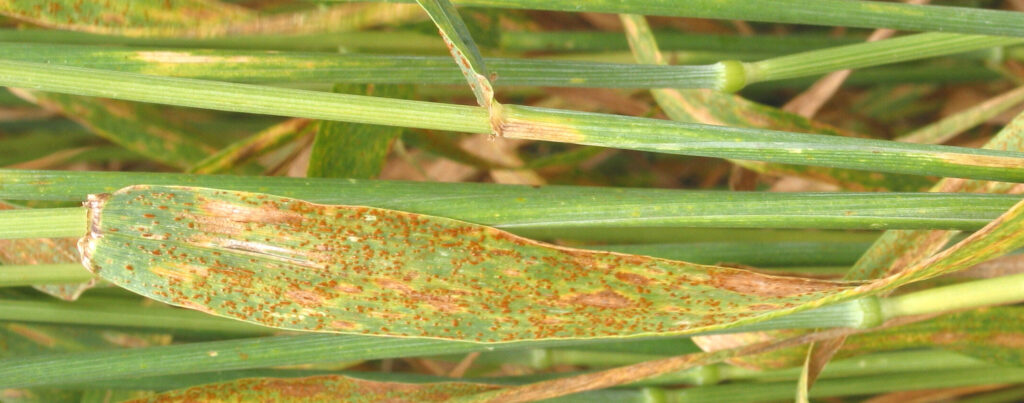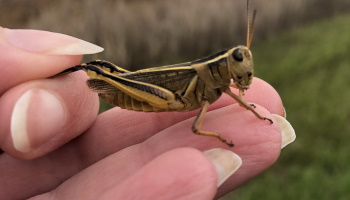Crops are susceptible to a number of pests that can cause damage to plants — and we’re not just talking insects!
According to researchers, the word pests is an umbrella term that includes insects, weeds and various plant diseases — anything biotic that could be detrimental to a crop. And since pests are bad for agricultural production, Agriculture and Agri-Food Canada (AAFC) scientists are on the case!
AAFC research scientist Dr. Brent McCallum, based out of the Morden Research and Development Centre, has teamed up with a diverse group of experts in plant pathology, entomology, weed science, economics and agronomy to share knowledge about the range of pests affecting Prairie crops. They’ve dubbed this network the “Prairie Biovigilance Network,” with the goal of improving their capacity to quickly and holistically save good crops from bad pests.
What is biovigilance?
The term biovigilance is a relatively recent term used to describe an innovative, multi-disciplinary approach to understand and combat the negative effects of newly introduced pests, new agricultural farming practices, new crops and climate change on plant health. Biovigilance relies on a continuous cycle of awareness, identification, assessment, understanding, mitigation and appropriateness to ensure that solving one problem doesn’t lead to another. The goal is to proactively mitigate potential threats from plant diseases, weed species and insects before they impact the agricultural sector on a larger scale.
Next stop for the Prairie Biovigilance Network: increased surveillance
Given that the Prairie Biovigilance Network has just begun and focuses mainly on work led by AAFC researchers, this is only the beginning. Plant pest surveillance is done by many agencies in the public and private sectors, however more collaboration is needed to expand the network and drive this all-encompassing work forward, so producers can fully benefit from this knowledge.
By expanding the Prairie Biovigilance Network to include complimentary partners, such as provincial governments, stakeholder organizations and producers, researchers can expand proactive surveillance activities, which is an important first step in the continuous cycle of biovigilance. Increased surveillance will allow researchers to combat current pests, predict what potential crop pests are on the horizon, and better prepare mitigation strategies that have a smaller environmental footprint while protecting producer’s crops. All of these activities will protect Canada’s reputation as a food exporting nation.
“We want to raise awareness and get producers participating with us. We don’t just do this work in isolation, it’s something we need to do with the producers. They’re the ones who are on the front lines and generally the first to notice pests cropping up in their fields — their contributions to the network are crucial.”
– Dr. Brent McCallum, Research Scientist, Morden Research and Development Centre
Maintaining consistent on-farm biovigilance with the support of partners across the Prairies will be important as pest populations rise and fall. By creating a sustainable control system using biovigilance principles, all Canadian producers will benefit, now and into the future. With consistency, producers can be better prepared to solve pest problems and improve soil and crop health, while continuing to be environmentally-conscious stewards of the land.
By the end of the project in 2026, one goal is to develop a communications network that translates knowledge into practice and helps producers apply this knowledge to better protect their crops. Information from producers will be an important feedback mechanism to achieve this goal and for a successful biovigilance program on the prairies.
The work being done within the biovigilance network plays a fundamental role in ensuring the resilience of Canada’s agricultural sector and contributes to our world’s food security and food supply.
Thank you to Agriculture and Agri-Food Canada (AAFC) for submitting this article and photos.
Photos
Top: Leaf rust on Superb wheat
Bottom: AAFC research scientist, Meghan Vankosky, holding a two-striped grasshopper

